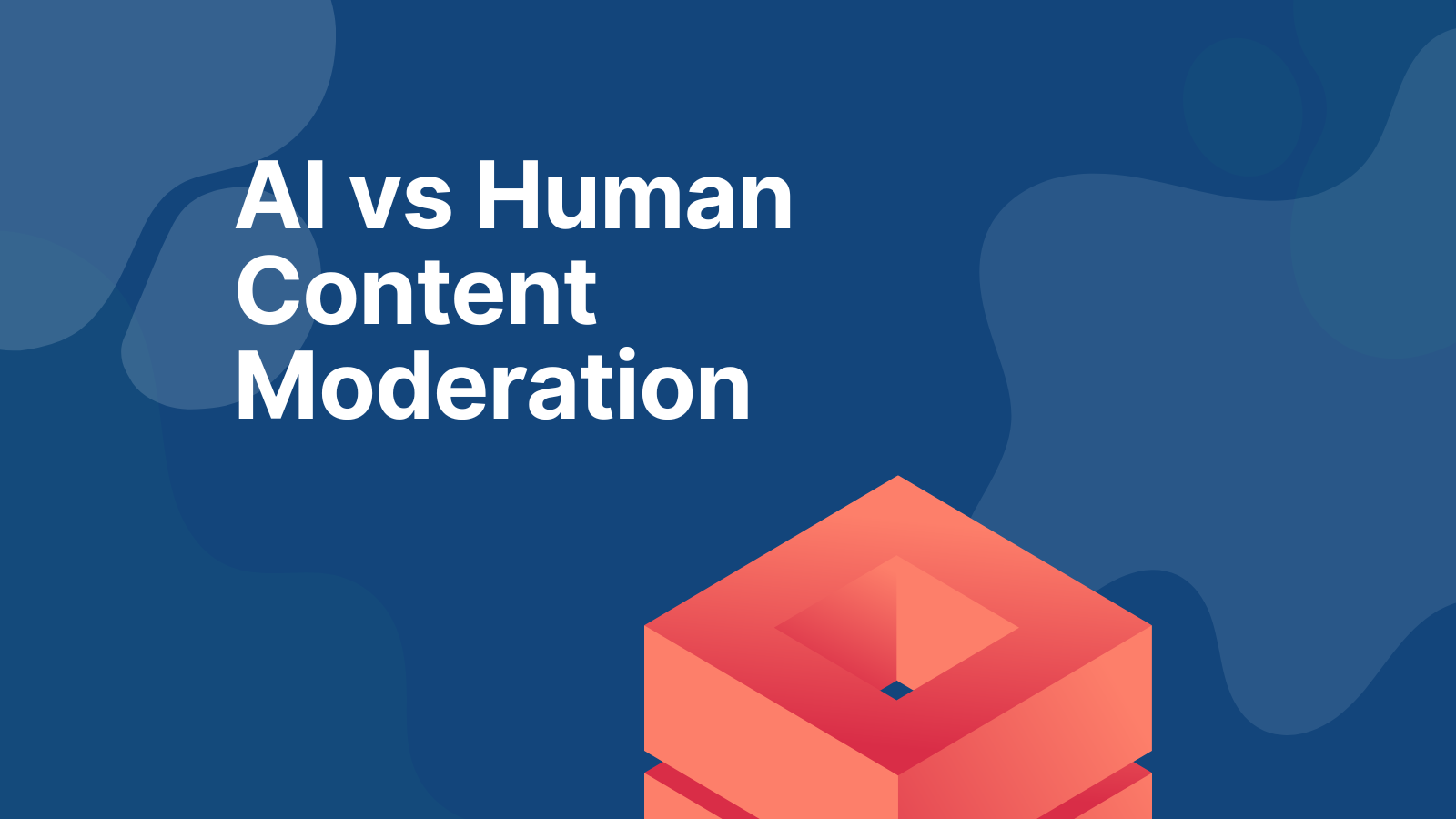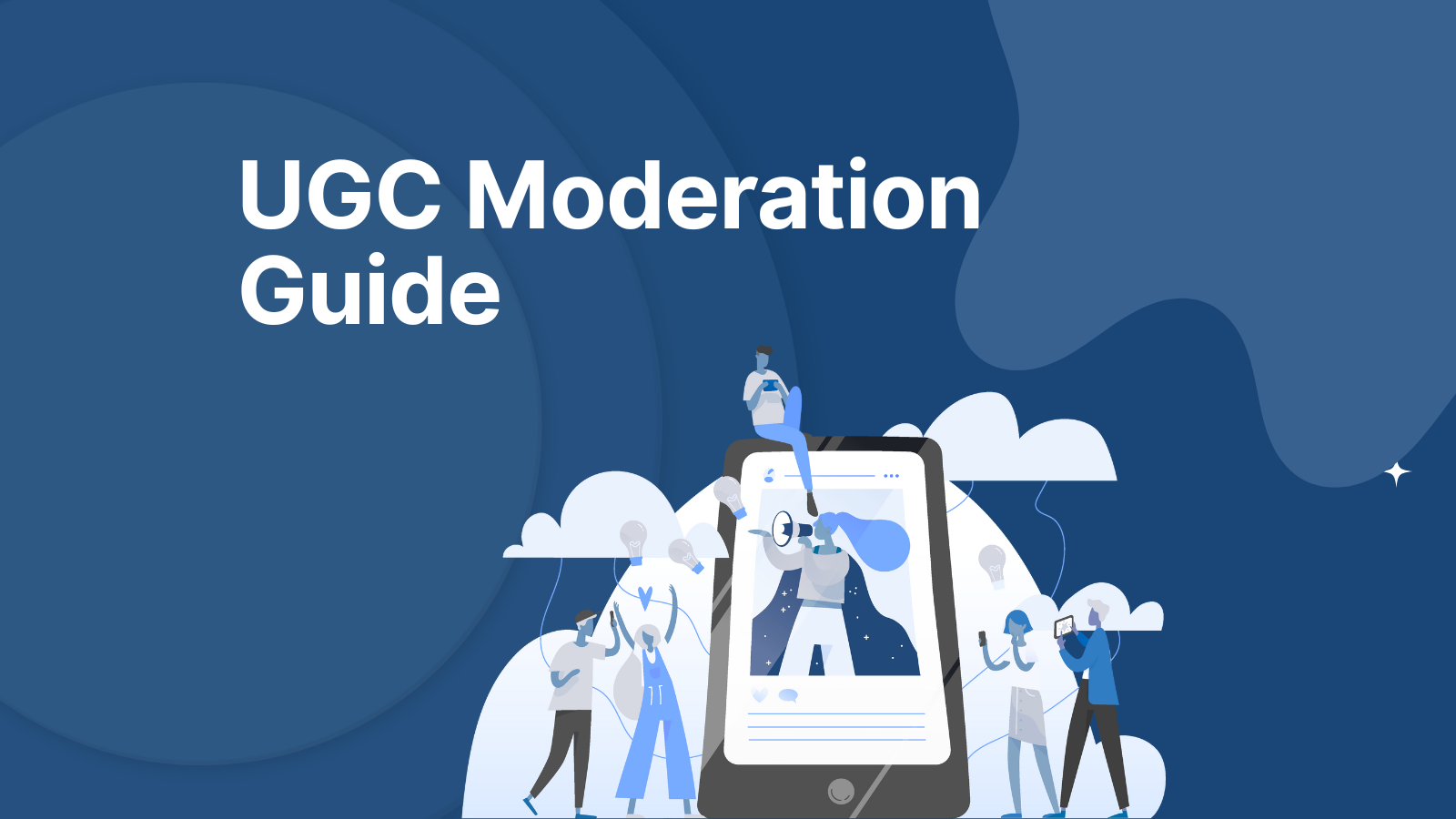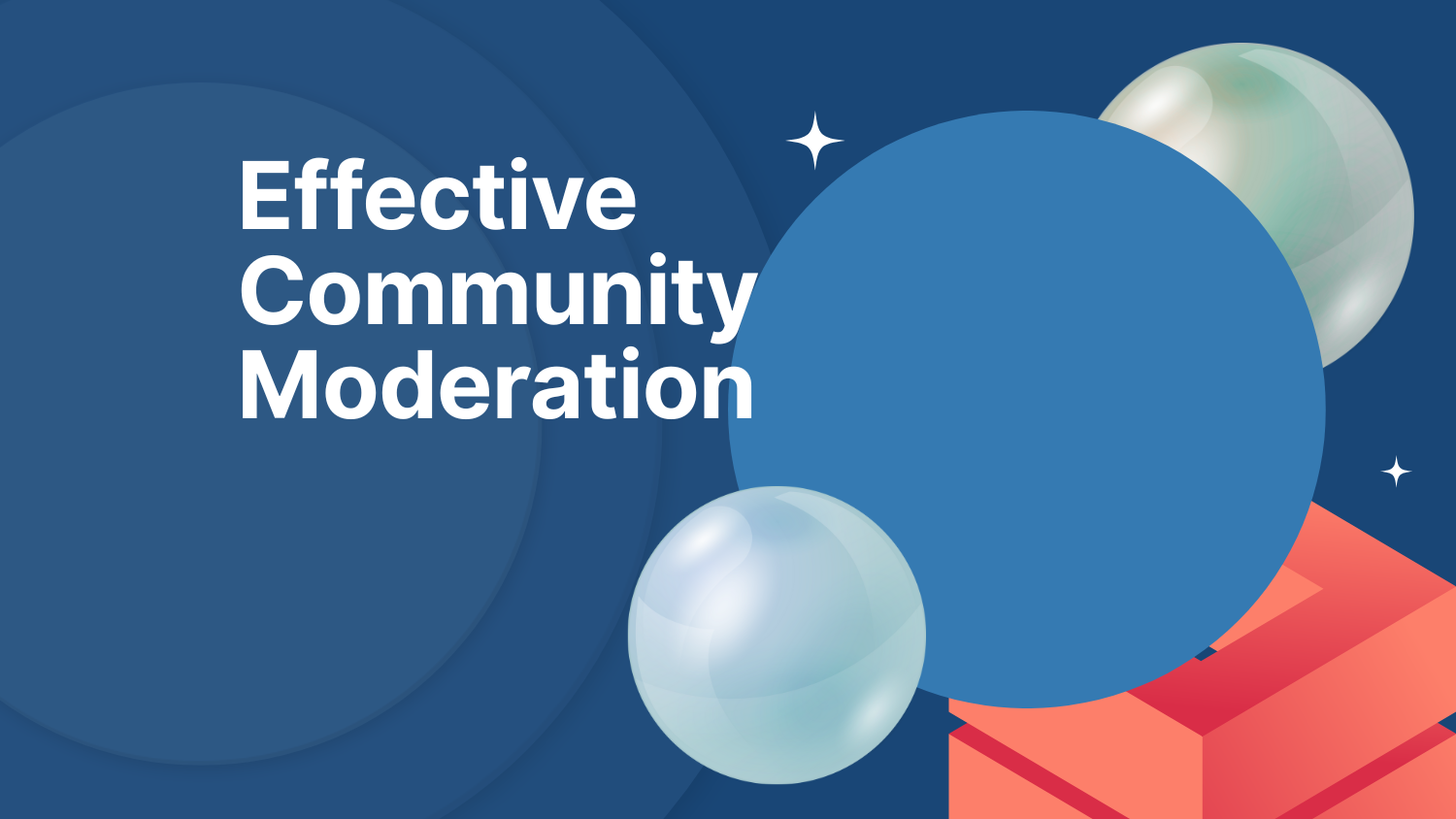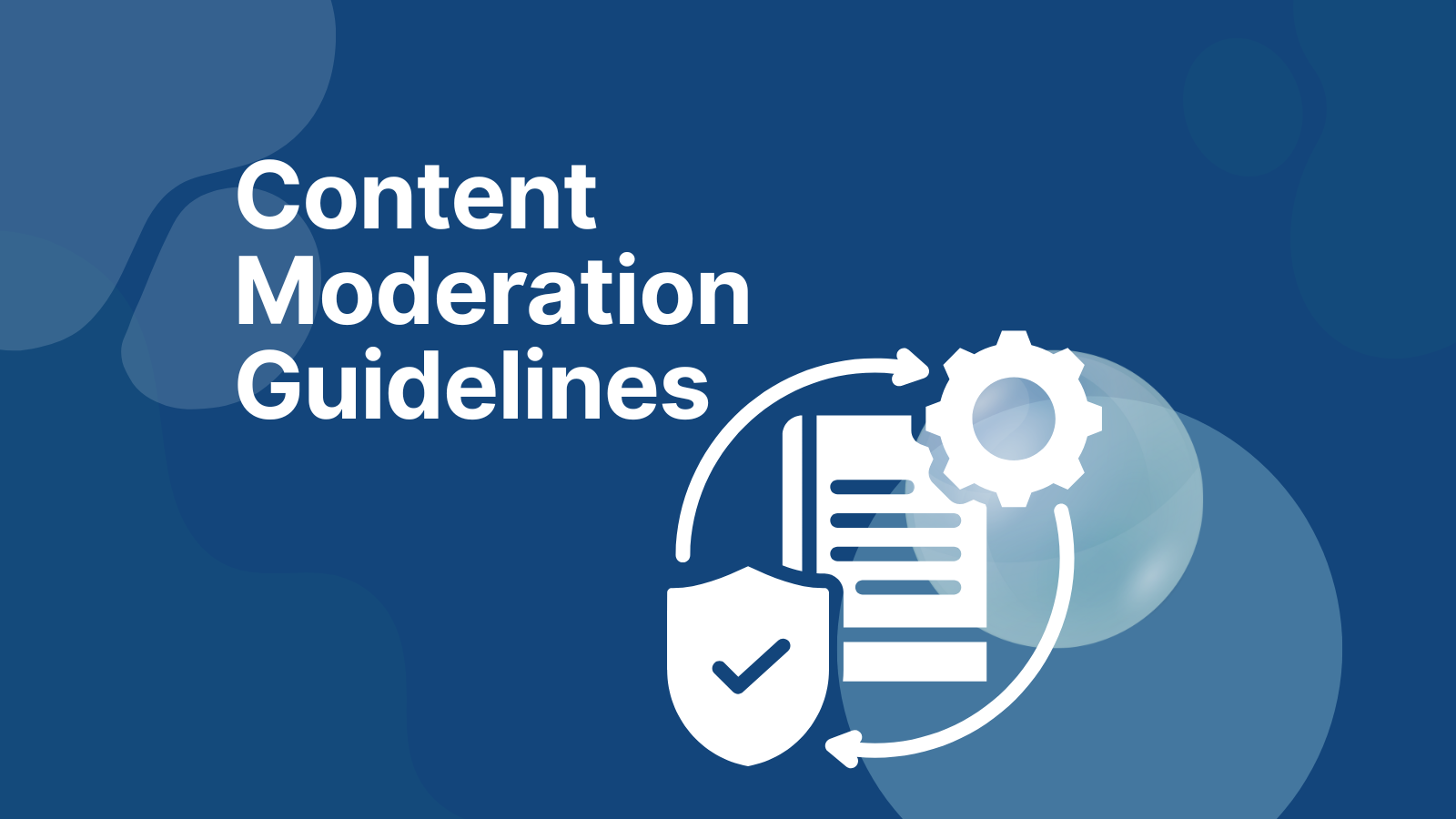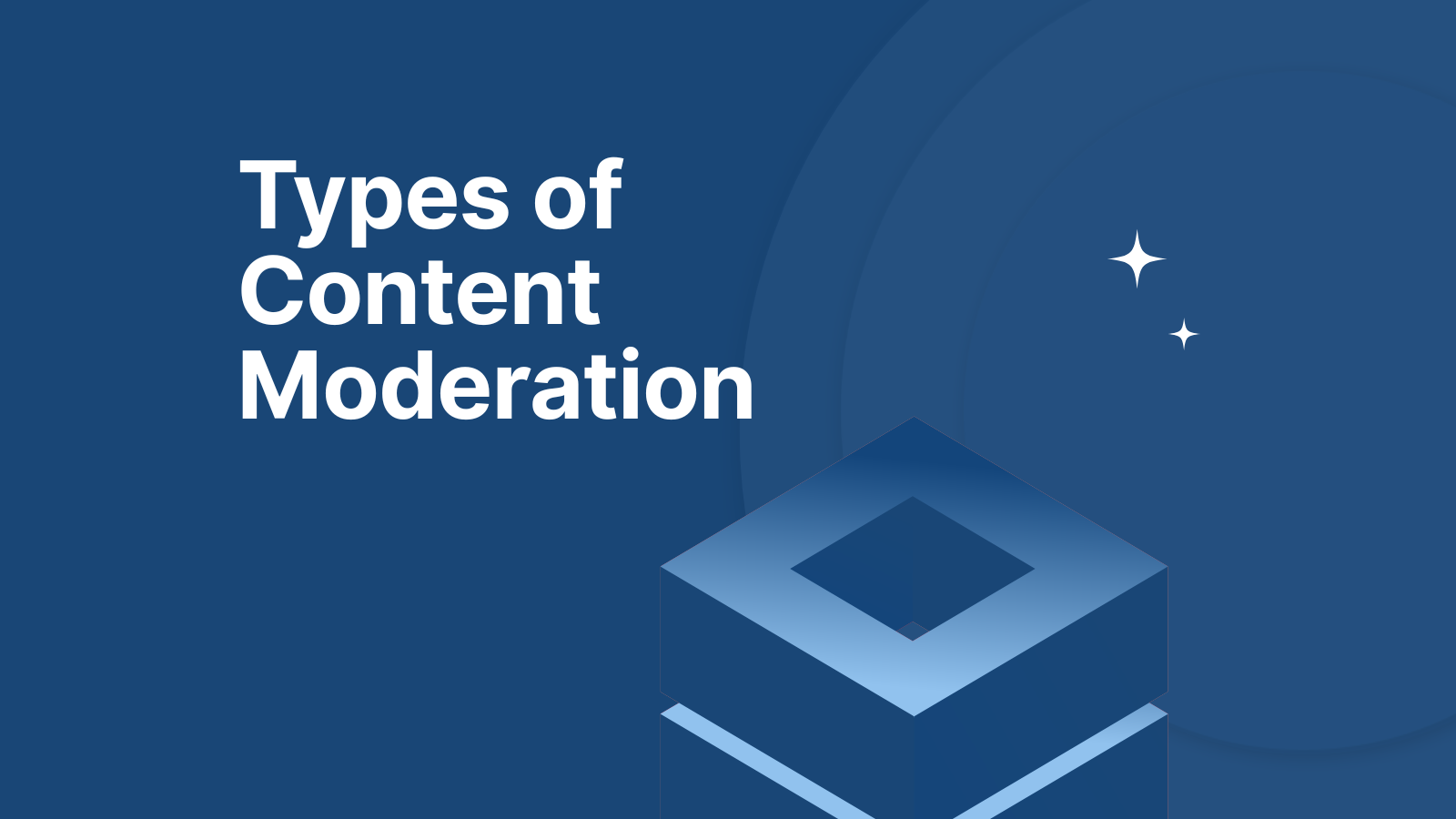Social Media Content Moderation: An Ultimate Guide for 2025
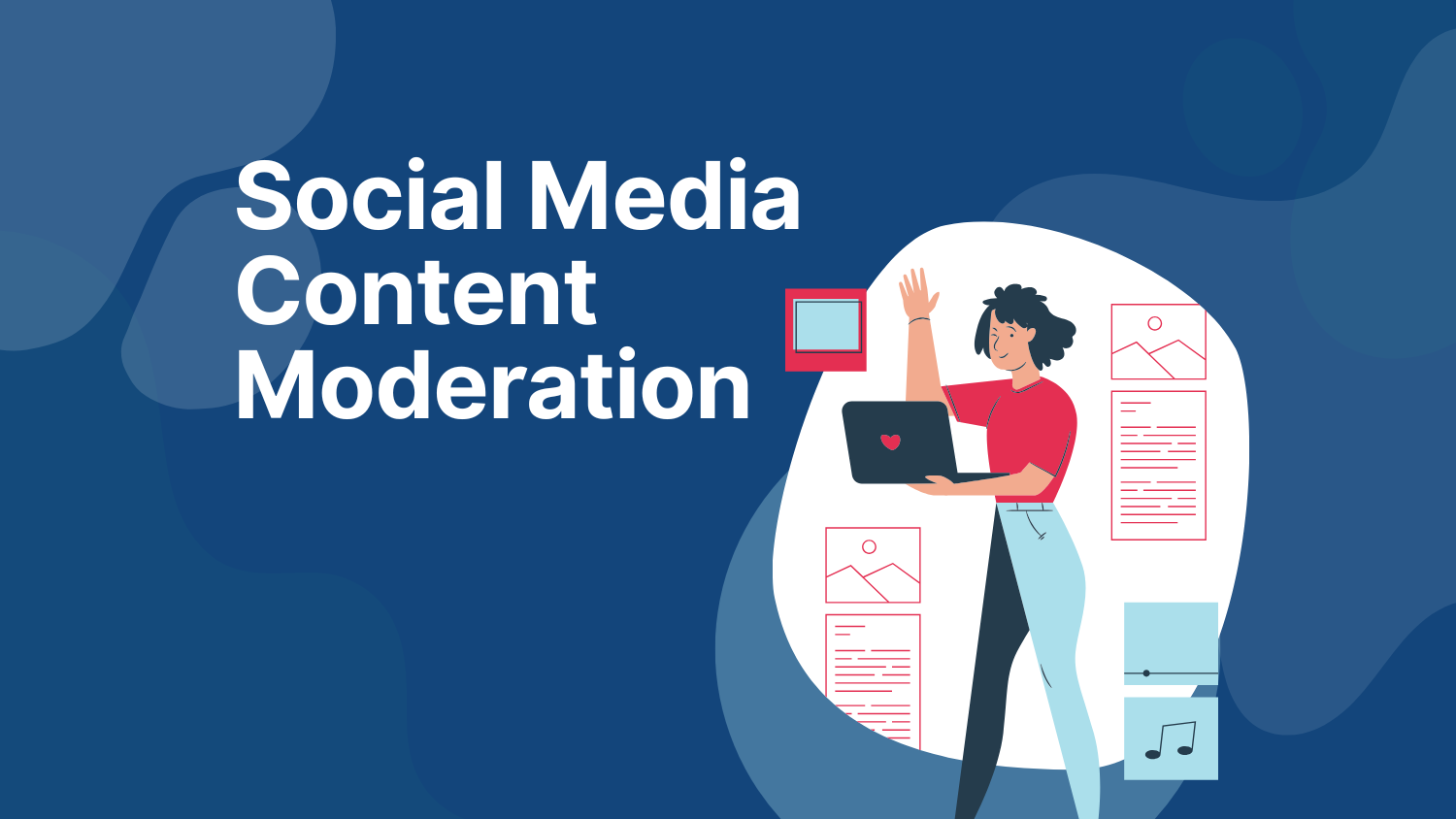
As billions of people use social media every day, these platforms are responsible for keeping the online environment safe, respectful, and productive. Things like offensive language, graphic violence, false information, and cyberbullying can spread quickly, affecting both user experience and the platform’s reputation. This is where content moderation is needed.
It is essential for protecting users, encouraging positive interactions, and following legal rules. It helps users enjoy social media in a safe and welcoming space. In this article, we’ll take a look at what social media content moderation is and why it’s important.. We’ll also explore how it benefits both users and businesses.
What Is Social Media Content Moderation?
Social media content moderation is the process of checking and managing what users post on platforms like Facebook, Instagram, Twitter, TikTok, and YouTube. The goal is to make sure content follows the platform’s rules and legal requirements, helping to create a safer space for everyone.
Moderation involves checking the posts, comments, images, videos, and messages to remove or flag anything that seems harmful, offensive, illegal, or misleading. This can be done by people (manual moderation) or by automated tools, depending on how big the platform is and how it chooses to moderate. Without effective content moderation, it would be difficult for platforms to provide a space where users can interact respectfully and feel safe online.
Why Is Social Media Content Moderation Important?
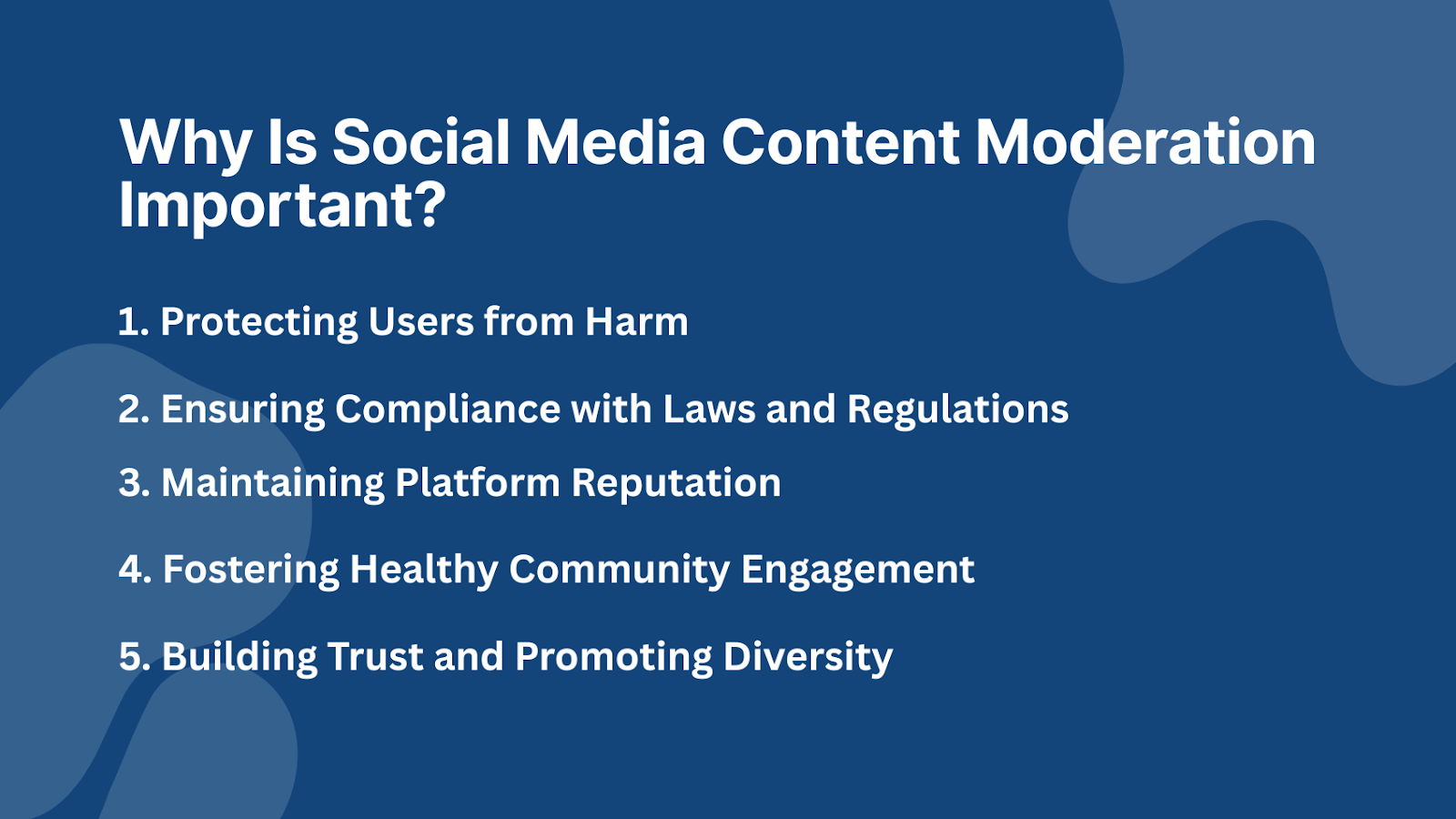
1. Protecting Users from Harm
One of the main reasons to use content moderation is to keep users safe from harmful content. Social media can expose users to things like hate speech, cyberbullying, harassment, false information, and violence. Unmoderated content can seriously affect people, especially those who are vulnerable. For example, kids and teens may be more likely to experience bullying online, and people with mental health issues may find harmful content. By having strong moderation rules, platforms can help reduce these risks and make the internet a safer place for everyone.
2. Ensuring Compliance with Laws and Regulations
Social media platforms need to follow the law and moderate content to stay compliant with regulations. In the European Union, for example, the Digital Services Act requires platforms to remove harmful content like terrorism-related material or child exploitation. In the U.S., laws like COPPA regulate how platforms manage children’s data and demand content moderation to protect young users. Not following these rules can lead to big fines, lawsuits, and loss of trust. So, good content moderation helps platforms avoid legal trouble and stay safe to use in different countries.
3. Maintaining Platform Reputation
A platform’s reputation is closely tied to the content shared by its users. If harmful or inappropriate content spreads, it can drive users away and seriously damage the platform’s image. This could become even worse if the content gets attention from the media. By moderating content actively, platforms can protect their brand and show they care about user safety, which is important for businesses, advertisers, and customers. Advertisers prefer platforms that ensure a safe environment, making moderation a key factor in keeping a platform trustworthy and attractive to brands.
4. Fostering Healthy Community Engagement
Good content moderation makes users feel comfortable joining conversations and sharing their opinions without fear of being harassed or exposed to toxic behavior. When users see that the platform enforces rules and keeps things respectful, they’re more likely to engage. If moderation is weak, it can discourage people from participating or sharing their thoughts. By creating a safe and friendly space, content moderation helps build a community where users trust the platform and keep coming back.
5. Building Trust and Promoting Diversity
Social media connects people from all over the world, with different cultures, backgrounds, and ideas. To support this diversity and create a healthy environment, platforms need to moderate content to stop discrimination, hate speech, and harmful beliefs from spreading. When users feel safe from these negative behaviors, they’re more likely to speak their minds, making the platform more inclusive. Trust and respect are key to creating strong online communities, and good moderation plays a big role in keeping that trust alive.
Types of Social Media Content Moderation
Different social media platforms use different ways to moderate content. The approach depends on the size of the platform, how many users it has, and what kind of content is shared. Here are some of the most common methods:
1. Pre-Moderation
In pre-moderation, content is checked before it goes live. This gives the platform full control over what’s posted, but it can slow things down. It’s usually not a great option for platforms with a lot of content being shared all the time.
2. Post-Moderation
Post-moderation lets content go up right away and gets reviewed afterward. If it breaks any rules, it’s removed. This method works for platforms with lots of activity, but sometimes harmful content can stay up for a little while before it gets taken down.
3. Automated Moderation
Automated moderation uses AI to scan content for things like hate speech or inappropriate images. AI can quickly go through lots of content, which is great for busy platforms. But it doesn’t always get sarcasm, slang, or context right, so human moderators still have to step in sometimes.
4. Reactive Moderation
In reactive moderation, users report bad content, and moderators take care of it after the fact. This puts some responsibility on users, but it can be slow. It’s often used with other methods, especially on larger platforms.
5. Distributed Moderation
Distributed moderation lets the platform’s users help moderate the content. This can mean voting on what gets posted or flagging stuff that breaks the rules. Reddit is a good example of a platform that uses this approach to manage a lot of content.
6. Hybrid Moderation
Hybrid moderation is a mix of different methods. For example, automated tools might check content first, and then human moderators review what’s flagged. This way, the moderation is fast, but it still keeps things accurate.
The Role of AI in Social Media Content Moderation
Artificial intelligence (AI) has become an important tool for moderating content on social media platforms. An AI content moderation tool uses machine learning algorithms to analyze text, images, and videos, identifying harmful content in real time. These tools can process big amounts of data quickly, flagging content that violates community guidelines and removing it.
AI moderation has several key benefits:
- Scalability: AI can handle large amounts of content, making it perfect for platforms with millions of posts every day.
- Speed: AI can flag and remove harmful content instantly, reducing the time users are exposed to it.
- Consistency: AI applies the same rules to all content, ensuring fairness and consistent enforcement of guidelines.
However, AI does have some limits. It can struggle with understanding subtle language, context, or sarcasm, and might miss some violations. That’s why most platforms use a mix of AI and human moderation, with trained professionals handling the more complicated cases.
Best Practices for Social Media Content Moderation
To ensure effective content moderation, social media platforms should follow these best practices:
- Establish Clear Community Guidelines: Clear, accessible community guidelines help users understand what is acceptable and what isn’t. Platforms should provide transparent explanations of their rules and update them regularly to address new challenges.
- Use a Combination of Moderation Methods: Platforms should employ a hybrid moderation approach, combining AI tools with human moderators. AI can handle high volumes of content, while human moderators can address more complex or subtle cases.
- Provide User Reporting Tools: Allowing users to report inappropriate content is crucial for engaging the community in the moderation process. Reporting tools help users take an active role in maintaining a safe environment.
- Train Moderators: Human moderators should be well-trained to handle complex cases. They should understand the context of the content and apply community guidelines consistently.
- Ensure Transparency: Platforms should be transparent about their moderation policies and actions. This helps build trust with users and prevents accusations of bias or censorship.
Social media content moderation is a critical component of creating safe, respectful, and engaging online environments. With the rapid growth of social media, platforms must rely on effective moderation strategies to protect users from harmful content, ensure legal compliance, and safeguard brand reputations. By combining human and AI-powered moderation techniques, platforms can manage vast amounts of user-generated content while promoting healthy, meaningful interactions. Ultimately, content moderation is not just about removing harmful material; it’s about creating a space where people feel safe, respected, and empowered to share their ideas.
How Utopia Analytics Moderates Social Media Content
Utopia Analytics takes a unique approach to social media content moderation with its Utopia AI Moderator, a tailored, real-time Social Media Moderation Tool designed specifically for your platform’s needs. It’s not a one-size-fits-all solution; instead, the AI model learns from your community guidelines, applying them with 99.99% accuracy to ensure everything posted aligns with your values.
What makes Utopia stand out is its ability to handle content moderation in any language, whether it’s a global language or a regional dialect. This is especially crucial for platforms like Frog Social, which caters to a younger audience that requires immediate protection from harmful content. Utopia doesn’t rely on traditional NLP tools; instead, it uses semantic understanding, so it can interpret text, images, and videos in context, catching nuances and ensuring the highest quality moderation across your platform.
But it doesn’t stop there. Utopia’s solution is designed to scale with your needs. It provides real-time monitoring, detailed analytics, and actionable performance metrics to keep your content in line with your community standards. What’s even better? The API integration is quick and simple, meaning your platform can be up and running with minimal disruption in just 2-3 days.
Protecting Young Users with Real-Time Moderation
Frog Social, a social media platform for young users, faced significant challenges with outdated manual moderation tools. These tools simply couldn’t keep up with the speed and creativity of users trying to bypass filters, using misspellings, symbols, and slang to sneak through harmful content.
After switching to Utopia’s AI-powered solution, Frog Social saw an impressive 99,6% accuracy rate in detecting harmful content in real-time. This drastically reduced the need for human moderation, freeing up their team to focus on improving user experience. Harmful content was flagged and removed faster than ever, offering users a much safer environment. The platform was able to protect its young audience from bullying, hate speech, and inappropriate behavior, without sacrificing quality or engagement.
Overcoming Language Barriers for Consistent Moderation
TheAsianparent, Southeast Asia’s largest content platform for parents, was struggling with the overwhelming task of manually moderating user-generated content in multiple languages. The complexity of handling Southeast Asian dialects, combined with the sheer volume of content, made it hard to maintain consistent moderation quality.
By integrating Utopia’s Social Media Moderation Tool, theAsianparent could pre-moderate content in real-time, cutting down 95% of manual work. Utopia’s support for multiple languages and dialects allowed the platform to provide accurate and effective moderation, ensuring a safe and welcoming space for its users. This not only improved the user experience but also saved costs, allowing their team to focus on more pressing tasks.
Frequently Asked Questions
Why is content moderation important on social media?
Content moderation is key to keeping users safe from harmful content like hate speech, cyberbullying, and false information. It also helps platforms follow important laws, like the Digital Services Act and COPPA. Good moderation helps maintain the platform’s reputation, encourages positive community interactions, and supports diversity and inclusion.
What are the different types of content moderation?
There are several types of content moderation techniques, including:
- Pre-moderation: Reviewing content before it’s posted.
- Post-moderation: Content is published first, then reviewed afterward.
- Automated moderation: AI tools scan and filter content in real-time.
- Reactive moderation: Users report inappropriate content, which is reviewed afterward.
- Distributed moderation: Community members actively participate in moderating content.
- Hybrid moderation: A combination of manual and automated approaches.
How does AI help with content moderation?
AI tools help by quickly scanning large amounts of content. They can flag harmful content right away, making sure everything is checked fairly and quickly. This helps platforms keep things moving without delays and with high accuracy.
What challenges do platforms face with content moderation?
Platforms deal with a few challenges, like managing a lot of content at once, making sure automated systems are accurate, and understanding tricky language, such as sarcasm. They also need to find the balance between letting people speak freely and keeping the platform safe, all while following different laws in different places.
How can content moderation affect user engagement?
Good content moderation makes users feel safe, which encourages them to engage more. When users know they won’t be exposed to harmful behavior, they are more likely to join in discussions, which creates a stronger, healthier community.
How do platforms handle multiple languages in content moderation?
Content moderation tools like Utopia AI use language-agnostic technology, which can process and moderate content in multiple languages and dialects without relying on traditional translation systems.This helps platforms moderate content in real-time, no matter where the users are or what language they speak.
How quickly does Utopia AI process content?
Utopia AI works in real time, meaning harmful content gets flagged or removed instantly. This keeps the platform safe for users all the time.
Can I customize Utopia’s moderation rules?
Yes, Utopia’s AI is fully customizable. You can set the rules that match your platform’s needs, and the AI will learn and adjust over time. If you want to change the moderation rules, it’s easy to do with just a few clicks.
Want to learn more?
Check out our case studies or contact us if you have questions or want a demo.









